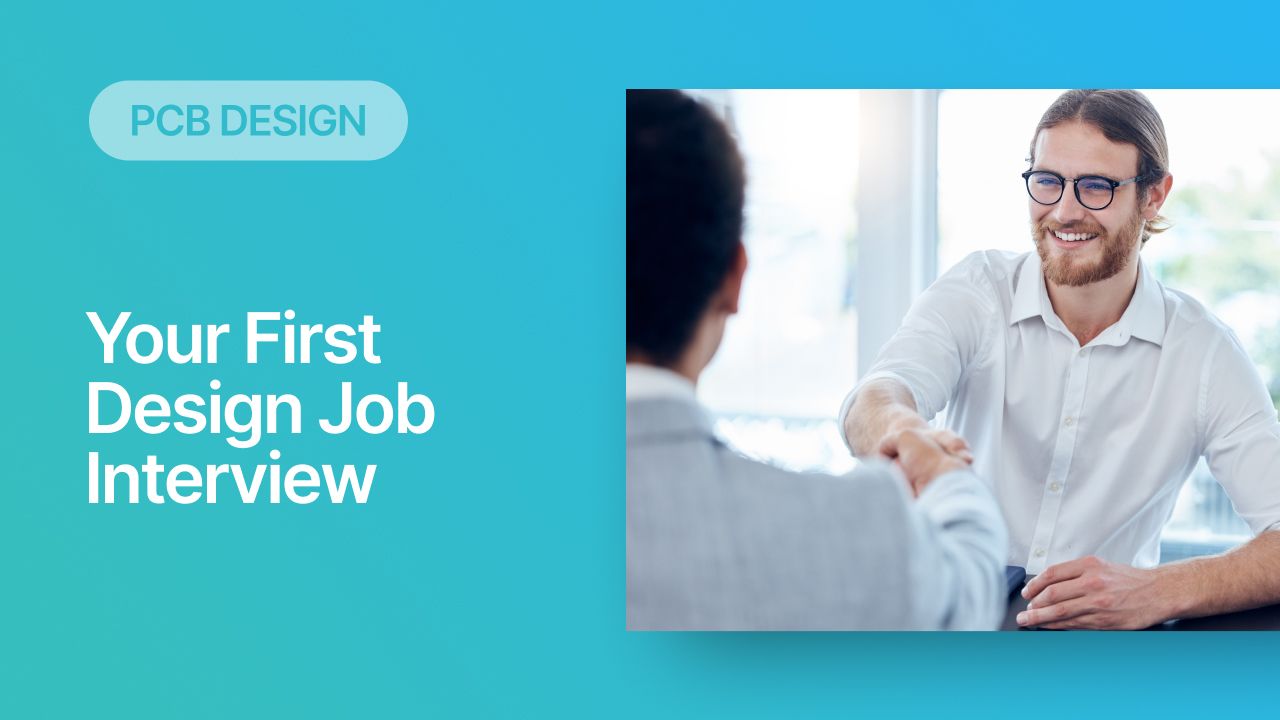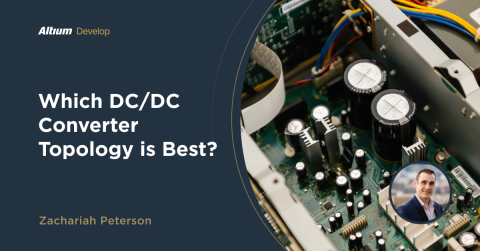PCB Design Interview Questions: A Guide for New Engineers

In the back half of 2021, it seemed like every news story proclaimed The Great Resignation was in full effect. Thanks to the pandemic, massively accelerated digital transformation, unprecedented stimulus, and the new focus on advanced technologies, people everywhere are changing jobs in search of new opportunities.
Even beyond PCB design, embedded development, and hardware design in general, there are more ideas, jobs, and VC money than there are engineers to pursue them. For the new engineer, it’s a great time to be getting into a field like PCB design, especially if you’re in North America. The US PCB design cohort is aging, and many more companies are realizing the importance of integrating their software and cloud services with a hardware component.
If you’re a new PCB designer and you’re just starting to make your way into the job market, then this guide should serve you well. My goal is to offer my own view on the hiring process and what you might expect from some of the most innovative companies who need hardware designers, embedded developers, and PCB designers.
What to Expect in the PCB Designer Interview Process
I haven’t gone through a multi-decade career as a PCB designer just yet, but I’ve been on both sides of the table with regards to job interviews. I’ve had to hire engineers for my own company, I’ve succeeded and failed at PCB designer job interviews in the past, and I’ve gone through multiple vendor interviews with companies, some of whom I just happened to land as clients. What I want to share below reflects my own experience and opinions, so keep this in mind when reading what follows.
Technical Interviews With Management and Team Members
Except when working with smaller companies as a vendor or private contractor, I went through multiple rounds of technical interviews before moving to the next steps in the job/vendor contract process. These points generally involve a technical assessment, where you’ll be interviewed one-on-one by multiple team members to ensure you’re operating on the same technical level as them. Managers may also get involved to assess fit to the team’s workflow and culture.
Most of the questions you’ll receive during a technical interview center around capabilities and background knowledge. Some of the common questions I’ve been asked include:
- What interfaces are you familiar with? They may also ask you to describe your process for routing a specific interface. For me, DDR or a serial protocol like USB are most common.
- If you have a noise problem in a high speed differential channel, how would you solve it?
- When do you need to worry about HDI design practices and how would you route these designs?
- If our firmware/software developer has a question, can you help him/her figure out how to solve it?
- How should we arrange a board if we have an RF circuit on the same board as our digital circuits?
- Are you familiar with the (insert industry standard name here) technical standard?
- Have any of your designs ever been put through UL/FCC/CE/other certification testing? If so, what was the eventual outcome for the design?
- What is your experience with board-level testing and debugging? What test would you implement to evaluate (insert performance metric here)?
I point these out because they follow the continuing trend of miniaturization and higher speeds in components, as well as the need to stay compliant (i.e., some knowledge of safety and EMI/EMC). I also point these out because they have been common for the types of designs I’ve been involved with in the past: moderate DC/switching power designs and mixed signal designs. These types of questions will align with the job for which you’re interviewing. For example, if you’re interviewing for a job involving motor drives, don’t be surprised if they start asking you how to layout an H-bridge driver, MOSFET circuit, or something similar.

These are just some of the more direct questions you might get asked. I’ve also asked similar technology-specific questions when I’ve hired people in the past. However, there is more an interviewer will want to know, or at least will appreciate if you know, that they might not ask about directly. There are also things you shouldn’t be afraid to highlight during your interviews to ensure you stand out from the crowd.
Understand the Workflow
Larger companies get to the point of being large because they implement scalable processes and workflows. Smaller engineering firms and service bureaus have to understand these processes It’s up to you to do your best to understand those workflows and processes. Regarding PCB design, it’s important to show that you understand the entire product development process, beginning from the front-end engineering and culminating in prototyping, testing, and eventually scaling. A few of the salient points around the design workflow might include:
- When is the right time to start sourcing?
- When is the right time to engage with a prototyping board house vs. a volume manufacturer?
- How should documents and design data be tracked and stored?
- What drives the design: mechanical or electrical constraints?
The more you understand about a professional or enterprise-level PCB design workflow, the less training you’ll need to come up to speed with your team and within the organization.
Own Your Capabilities and Experience
When working through the above points in a technical interview, you should draw examples from your own experience. Interviewers appreciate it when you can clearly define a problem, strategy, and outcome as it makes your experience and capabilities more tangible. You shouldn’t use this as an opportunity to brag, but rather showcase your thought process and illustrate how it leads to meaningful results. If you can back this up with an impromptu design review on-screen, you’ve really made the results tangible. It never hurts to have an example design ready to share so that you can really illustrate your capabilities for an interviewer.

During interviews, particularly when you’re being asked about skills and experience, don’t be afraid to highlight accomplishments in other areas of engineering, even if they aren’t directly related to PCB design. If these accomplishments involve collaboration across different engineering disciplines, then that’s even better. This lets you highlight your ability to work beyond your comfort zone and it shows that you know how to communicate with people who aren’t EEs.
During one of my conversations with Judy Warner on the Altium OnTrack podcast (before my hosting gig began), she mentioned a conversation she had with a manager at a large aerospace company. The takeaway is this: you don’t need to know everything, but you need to know a little bit about what everyone else does. It also shows that you possess a broad technical background, something which can help you be a better communicator with other engineers.
DFM/DFA and Sourcing
I’ve been asked directly about DFM/DFA practices in vendor interviews. In particular, I see this from smaller companies that have no in-house PCB design expertise; they didn’t have any reference for how to approach a design so that a product is manufacturable at scale and with low supply chain risk. I’ve also been asked directly about sourcing strategies, or rather how to design a board so that you can reduce risk of a design becoming unsourceable. I usually talk about this in terms of sourcing components, but the same ideas apply to other raw materials, particularly the laminates you’ll need for the design.

If you can outline some ways you would approach a design on the front-end, where the BOM is being compiled and the bare board is being planned, you’ve illustrated another aspect of the value you can provide. If you’re interviewing for a vendor contract, this is a big part of illustrating value; clients appreciate when you know how to ensure their designs are manufacturable. If you’re interviewing for a regular job, this shows that you’re thinking ahead and trying to minimize risk for a new product.
Everything is Embedded and Integrated
Today’s hardware is bringing more of the critical processing tasks onto the end device and taking them off of your phone or the cloud. We’re basically seeing a reversal of the trend that occurred beginning in 2010, where everything was connected to your phone, your laptop, and some end service on the web. Putting processing-intensive tasks on the end device doesn’t mean a product will never connect to the internet, it just means more of the application development energy is focused on the embedded side of the product, and the hardware has to be designed to support this.

All this means that the modern PCB designer needs to have some basic programming and software development skills. You don’t need to be operating at the level of a professional polyglot software developer, but an understanding of software and programming principles makes you more of an asset. It always helps if you know a bit of C, Python, or another language so you can at least speak to developers on their terms. Even if you’re not the best coder, understanding little things like timing diagrams is helpful for communicating with developers. This is all part of working in a multifunctional team, something that is important whether you’re a contractor or if you’re seeking a full-time job.
You Got the Job! Now What?
At the end of the day, sufficient technical skills are mandatory and will help you win out over other candidates. If you managed to dazzle your interviewers and you got the offer you wanted, then allow me to congratulate you! Get ready to participate in a range of engineering tasks beyond just board layout. Today’s designers are no longer simply solving a puzzle involving physical layout, they have to take a more active role in engineering and manufacturing.

After you’ve nailed your job interview, make sure your manager invests in the industry’s best PCB design tools in Altium Designer, available within Altium Develop. You and your team will be able to stay productive and collaborate efficiently on advanced electronics designs. Everything you need to design and produce advanced electronics can be found in one software package.
Whether you need to build reliable power electronics or advanced digital systems, Altium Develop unites every discipline into one collaborative force. Free from silos. Free from limits. It’s where engineers, designers, and innovators work as one to create without constraints. Experience Altium Develop today!










